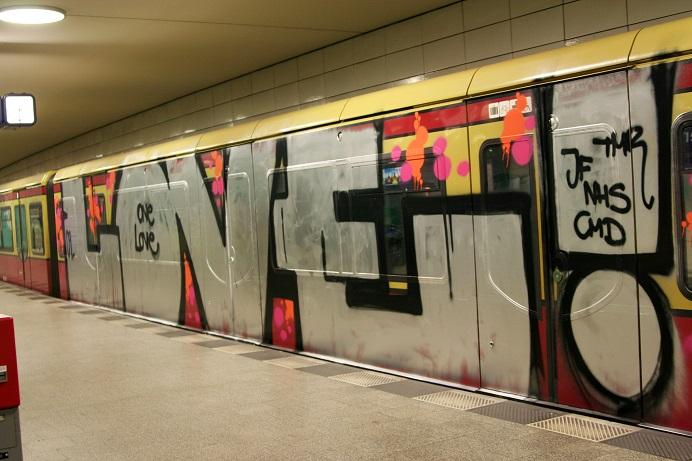Voice not vandalism
If graffiti were on a canvas and not walls it would be considered art.
When looking at Cannon Falls, or any small town, there are few similarities between it and a big bustling city. However, one noticeable similarity between the two is the graffiti tagged to trains, buildings, and alleyways throughout the town. To tell an artist graffiti isn’t art, would be like telling a dancer dance isn’t a sport, it leads to controversy. To most, graffiti is hideous vandalism but, to some, graffiti is a stamp that allows an artist to tell their story. Graffiti follows all rules pertaining to art and can be seen in many modern day galleries. There are many different styles of graffiti and each of these styles must be understood in order to decide if graffiti is art or not.
Tagging is the most common form of graffiti. Tagging is often a name spray painted on a dingy surface in under developed areas. This style of graffiti is vandalism and can be seen around towns on trains, buildings, and alleyways. Tagging has a bad reputation and it is because of this reputation that the many other styles of graffiti have had trouble gaining the praise they deserve. 3D design and stencil have recently come about and are found mainly on city streets and buildings. The “gang” reputation that tagging has is not connected to 3D design or the stencil form of graffiti.
Sculpture, 3D design, and stencils are continuing to pop up in the modern day art world. 3D design has been known to create the illusion of a gaping hole in the ground which stops people to admire the work. When viewing this art, the word vandalism never crosses the mind. As well as 3D design, the stencil form of graffiti has caught the eye of many artists. Stenciling is created by painting with stencils that are made out of paper or cardboard, and is portrayed on the side of buildings. Black and white stencils normally hold a strong political message. Citizens should begin preparing to see these forms of graffiti in many more modern day locations. One prominent location has been art galleries, mainly because artists are discovering that graffiti follows all the rules that pertain to regular “art.”
Following the rules of art is what makes graffiti art. Graffiti Studio, a website focused on all forms of graffiti states that graffiti fits all seven rules of art; form, value, texture, line, shape, space, and color (Graffiti Studio). Graffiti artists obey the rules of art by using many different materials and surfaces to create the graffiti (Graffiti Studio). When people view graffiti, the most noticeable rules are line, shape, space, and color. These four areas of art help graffiti be the eye popping art it is, but texture and form help enhance the art as well. Although graffiti isn’t painted on a common canvas, art institutes have been focusing on this wild new style of art. This legal form of art has even been allowed into galleries.
Graffiti has been gaining prominence in the art world. Various art galleries are allowing this legal form of art to be viewed in their shows. The galleries are looking for graffiti painted with passion. The opportunity of being viewed in art institutes has given graffiti a chance to make itself known to the outside world in a positive way. For those who think graffiti needs to be limited to dark alleys or that it is better if not seen at all, there is a very attainable solution.
One solution to the graffiti “problem” would be putting aside places in the city where graffiti can be painted legally. If a city nominated a back alley way or an old building as a place where graffiti artists could legally express their art, the painting of illegal graffiti would decrease. Limiting one location for graffiti to be painted and not taken down right after, would clear up other walls where illegal graffiti used to be placed, and overall, clean up the city buildings, trains, and alleyways. Few art galleries and museums allow graffiti artists to have complete freedom when painting. Having a designated location for graffiti would give artists back some of their freedom.
The many different styles of graffiti follow the rules of art, contain a message, and are seen in art galleries and museums. For these very reasons, graffiti is art. Graffiti is gaining prominence and will soon become a legal act in certain venues. Embracing this new exciting form of art will quicken graffiti’s access to local galleries and increase the number of graffiti artists, who are all waiting to tell a story with their art. Modern day graffiti is voice, not vandalism.

